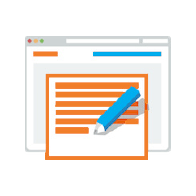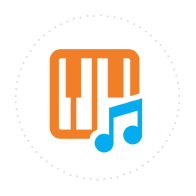Musika Quick Stats
24 Years
Since We Started
41,456+
Happy Customers
10,769
Cities with Students
3,123
Teachers in Network
Lesson Special - Up to 20% OFF! Get Started Now with a Risk-Free Trial!
Here are just a few of the many teachers offering Piano lessons in Santa Ana . Whether you are looking for beginner guitar lessons for your kids, or are an adult wanting to improve your skills, the instructors in our network are ready to help you now!
Instruments: Piano Voice Keyboard
I encourage my students to find and explain to me the techniques that are working for them once I have given any instruction. I want you to have a deep seeded understanding of the teachings which I am employing upon you. I will begin with basic music fundamentals for all my students and establish a scope of your knowledge and then move forward accordingly. For my piano students I will start with a beginning piano book and we will move forward as you progress. Read More
Instruments: Piano Voice Keyboard
Each student is different and as such, each student's approach to learning music is different. While still addressing your personal goals, I work to help you achieve those goals and interests, but also utilize my own experiences in teaching to foster deeper growth. I focus on exploration, keeping the study interesting, all while understanding that each student can be at any level, and learn at any speed. I believe that both talent and potential must be met with effort for growth to be achieved, and that all students need some form of discipline and encouragement and make sure to serve both at every lesson. Read More
Instruments: Piano
With any new student, I first get to know what the student likes and what they would like to accomplish with their music lessons. I am caring and supportive teacher. My style of teaching is based on two principles: guidance and encouragement. I strive to set realistic goals for each of my students, My experience shows that students do best when they are encouraged and nurtured. I also try to pass my love of music to my students. Read More
Instruments: Piano Organ Synthesizer Keyboard
I offer style varieties rhythmically based on both hands to develop a flexible coordinated approach to playing. My experiences have introduced children as early as seven years to keyboards, and I have taken former music students needing to advance into new materials, specifically training both hands for sight reading music charts or playing by ear. My ability to notate music allows teaching students the tools the trade and art of reading, writing with the disciplines of practice needed for any level. Read More
Instruments: Piano Voice Trumpet Euphonium
I am an extremely passionate music teacher, specialising in exceptional tuition on the trumpet, piano and voice. I am regarded as one of the best trumpet players in the world and have performed internationally as a trumpet player. I have lived and performed music in 4 different countries playing and teaching at the highest level. I was previously head of music at a top international school in Stockholm, Sweden. I have performed with the Sydney Symphony orchestra, in the Syndey Opera House and all over the world as a trumpet player. Read More
Instruments: Piano Guitar Violin Viola Drums Conga Latin Percussion Music Electric Guitar Djembe Acoustic Guitar
I started teaching part time while still in high school back in my native Malaysia and that is where my experience began. I taught on and off while in Malaysia during the pandemic (due to the nature of COVID), but I have gotten into regular teaching since moving to LA in 2022. I am an instructor who emphasizes student success, happiness, fulfillment and result. I understand that some students have different wants, needs and priorities when it comes to music education and I am ready to cater to all student types! Read More
Instruments: Piano Drums Synthesizer Latin Percussion Keyboard Djembe
When will I start to see results?
Results can be seen within a week of practice. Depending on what instrument we study together, you will be humming along to songs on the radio, tapping your hands and feet to the radio, or playing piano on park benches (assuming you're a beginner).
If you're an intermediate student, you can expect to see signs of growth on your instrument within 1 - 2 lessons. If you keep with your practice routine, your chops (muscles) will grow, and you will start to build muscle memory.
After a year or so, the muscle memory will be deeply encoded, and you'll likely never forget the songs you've been practicing.
If we study for more than a year, the possibilities are endless! Generally I like to reassess goals yearly, and we'll set bigger roadblocks for personal achievement. Realize there is likely nothing you CAN'T do with enough practice and determination.
How do I know if my child is ready to start lessons?
A child is ready to start lessons at any age, especially if they show an inclination or attraction to musical instruments, percussive toys, etc.
Anybody who comes from a family of musicians can start any time, and probably will naturally grow into a musician based on exposure. If you have NO musicians in your household, music will likely be a new exercise, but one which will be a lifelong investment in your child's brain performance. Musicians have been proven to score better in areas of math and foreign language, because similar areas of the brain are engaged when practicing music. Music is, in essence, a language of rhythm.
If you're curious about your child starting music lessons, buy them a small drum, have them sit at the piano or keyboard, or start them on a recorder or other small instrument. If they enjoy it, they're ready for lessons!
What advice do you have about practicing effectively?
Practice requires consistency. It's been shown that 5 minutes of practice daily can be more effective than a 1 hour session, 3 days a week.
Jerry Garcia used to wake up at 5am every morning to play scales, and the proof is in the pudding with this ability to play any style, any time, and perform fluidly for hours at a time.
Practice should be a labor of love, and one that you're motivated to engage in. My assigned practice will be geared towards songs you enjoy, songs we've selected together to work on, and something that pushes the envelope of your stylistic comfort zone.
24 Years
Since We Started
41,456+
Happy Customers
10,769
Cities with Students
3,123
Teachers in Network
Trusted as the industry leader, for over 21 years the teachers in our network have been providing Piano lessons in Santa Ana to students of all ages and abilities.
We'll then reach out to the teachers for you.
Schedule the risk-free trial lesson directly with the teacher.
Continue with that teacher or try someone else.








Chari
Im mainly interested in piano lessons for my 8 year old daughter but also inquiring about guitar lessons and voice lessons for 2 others in my home please.
Sandy
Hi there, I am interested in getting my daughter started on either piano or guitar lessons. She is 6, and will turn 7 in May. It would have to be evenings or weekends.
dayana
Im looking for a teacher i have 2 boys one is 4 the other one is 6. They have shown some interest in music if possible i will like to have them take the class together